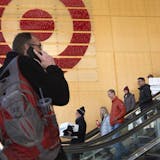Remember the "Can you hear me now?" guy? The Verizon ads aired for years featuring the bespectacled protagonist dodging dropped calls and spotty service. (He's now with Sprint.)
To meet ever-growing demand and support more mobile devices, cellular service providers are now affixing antennas to existing structures like light poles for improved, expanded coverage. But they must secure permission first.
That's why Scott County is contracting with Neo Network Development Inc., a company founded in 2013 outside of Chicago, to log a database of available sites for micro antennas. Hoping to attract more carriers by fall, the county could also earn more revenue as each carrier must pay rent to operate the antennas.
Better cell coverage is the modern virtual railroad. It's "the whistle-stopper of the 21st century," said Perry Mulcrone, the county's business relationship director working on the project.
The still largely rural but increasingly more developed county is outsourcing the work of connecting its infrastructure with wireless service providers like Verizon or AT&T.
But first, Neo must identify sites for micro antennas (also called "small cell" technology) to supplement existing, often-hulking cell towers.
These smaller antennas are hardly visible, affixed to street or traffic lights and rooftops at the discretion of owners or operators. Designers from Neo will work to ensure the devices match the aesthetic of the existing property.
Broadband is a resource, and the state of Minnesota has been increasingly focusing on better connecting underserved areas, which are often rural.



